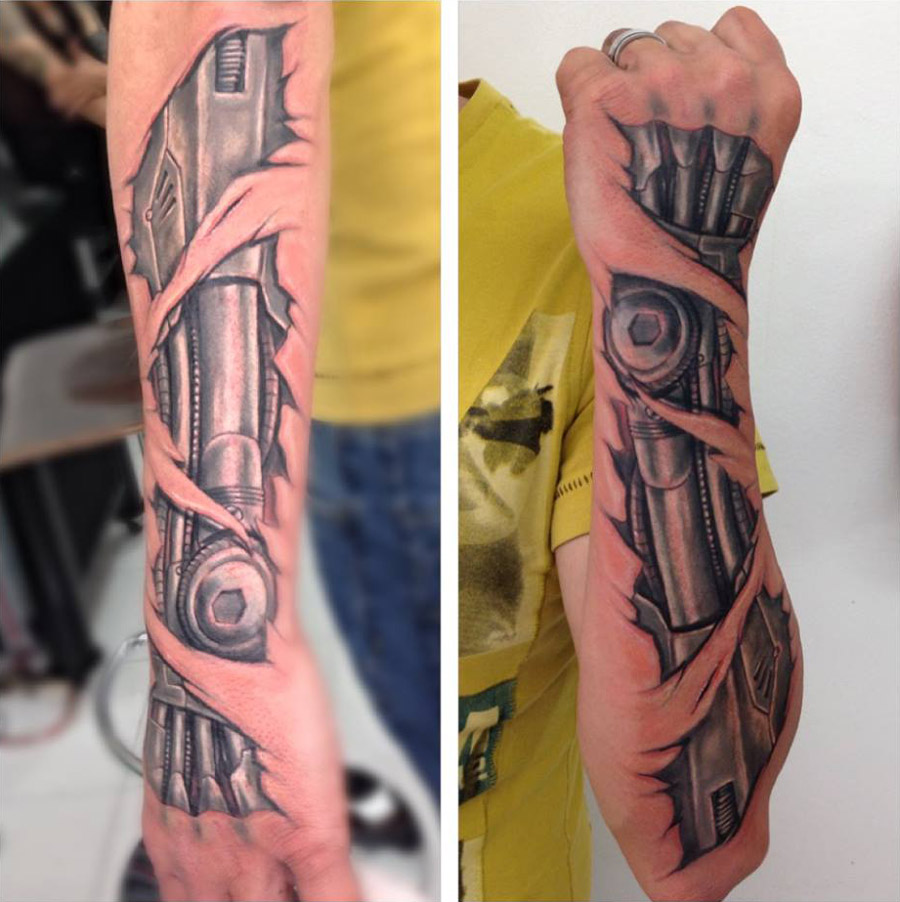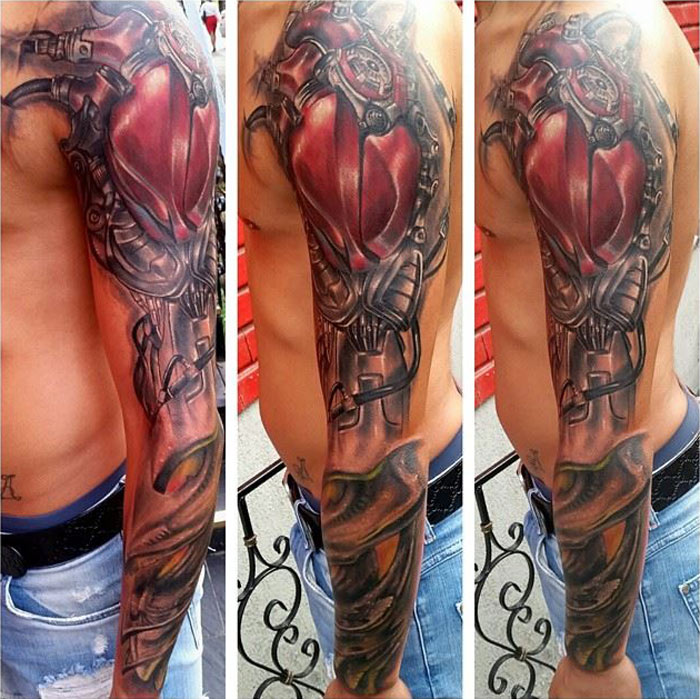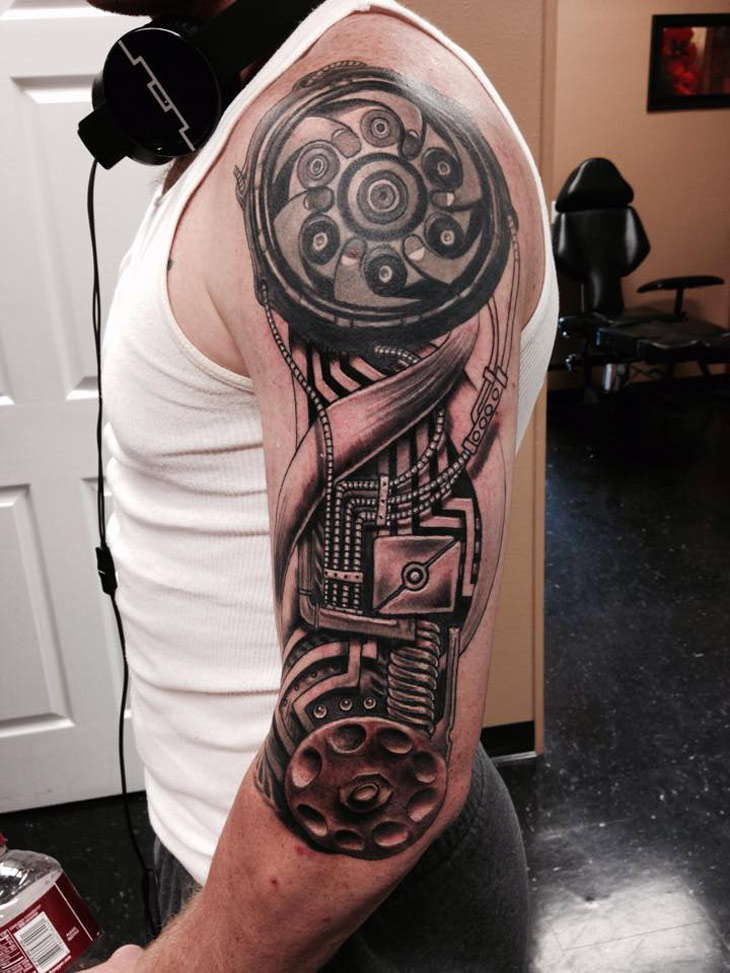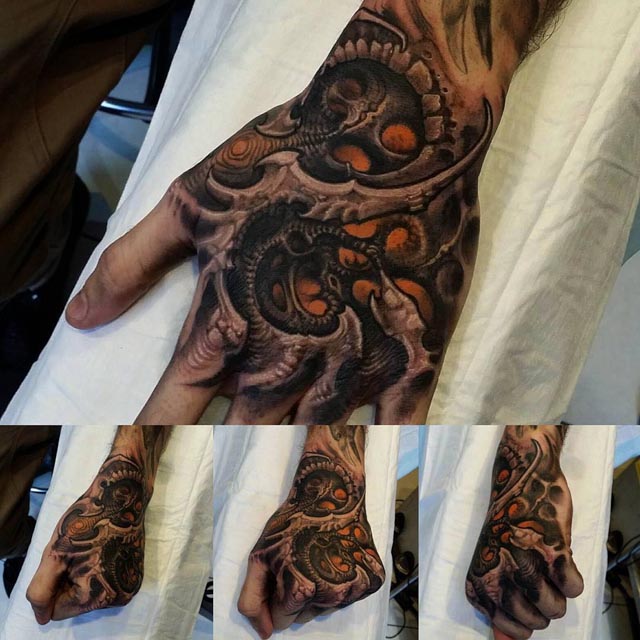
Okay, let’s dive into the world of biomechanical tiger tattoos.
Ever stared at someone’s ink and thought, "Whoa, that’s intense!"?
Maybe it was a biomechanical tattoo.
But what even are biomechanical tiger tattoo ideas?
And how do you make sure yours doesn’t look like a robot threw up on a jungle cat?
Let’s break it down.
What’s the Deal with Biomechanical Tiger Tattoo Ideas?
Think of it like this: it’s merging organic and inorganic.
It’s the raw power of a tiger blended with futuristic, mechanical elements.
Gears, pistons, wires, all intertwined with the tiger’s muscles and bone structure.
It’s a statement.
It’s bold.
It’s saying, "I’m a force to be reckoned with, both inside and out."
Why a Tiger? Why Biomechanical?
Tigers are iconic symbols of strength, courage, and independence.
They embody primal energy and a fierce spirit.
Biomechanical elements add a layer of complexity and futuristic edge.
It’s a way to show you’re not just strong, you’re also adaptable and evolving.
I’ve seen some incredible pieces that really capture this.
One guy I knew had a tiger’s head with exposed gears where its jaw should be.
Super cool and unique.
Getting Started: Brainstorming Your Biomechanical Tiger
Okay, so you’re intrigued. Where do you even begin?
Here’s my advice:
- Find Inspiration:
- Browse tattoo portfolios online.
- Check out sci-fi art and concept designs.
- Look at real-life machinery for inspiration.
- Think About Placement:
- Full back pieces are epic, but a serious commitment.
- Shoulders and arms work well for smaller, more contained designs.
- Legs offer a long canvas for a dynamic, running tiger.
- Consider the Level of Detail:
- Do you want intricate gears and wires, or a more subtle integration of mechanical elements?
- More detail means more time and potentially more money.
- Color or Black and Gray?
- Black and gray can create a stark, industrial feel.
- Color can add vibrancy and highlight specific mechanical components.
Key Elements to Consider for Your Biomechanical Tiger Tattoo
Let’s get into the nitty-gritty. What actually goes into a good biomechanical tiger tattoo?
- The Tiger’s Anatomy:
- Don’t forget the tiger! It needs to look like a tiger, even with the mechanical additions.
- Work with your artist to ensure the proportions and details are accurate.
- The Mechanical Components:
- Gears, pistons, wires, hydraulic tubes – the possibilities are endless.
- Think about how these elements interact with the tiger’s anatomy.
- Do the gears power its movements? Are the wires connected to its nervous system?
- Integration:
- This is where the magic happens.
- The mechanical elements should seamlessly blend with the tiger’s skin, muscles, and bones.
- Think about how the metal connects to the organic tissue.
- Shading and Depth:
- Proper shading is crucial for creating a sense of realism and depth.
- It will make the tattoo pop and give it a three-dimensional appearance.
Finding the Right Artist
This is the most important step!
You need an artist who specializes in biomechanical tattoos.
- Check their portfolio:
- Do they have experience with biomechanical designs?
- Do they have experience with animal tattoos?
- Do you like their style?
- Read reviews:
- See what other people have to say about their work.
- Talk to them:
- Discuss your ideas and see if they’re on the same page.
- Make sure they understand your vision.
Don’t rush this process. A good artist can make or break your tattoo. I’ve heard horror stories, and trust me, you don’t want to be one of them.
Biomechanical Tiger Tattoo Ideas: Inspiration to Spark Your Imagination
Need some specific ideas to get you started? Here are a few:
- Exposed Spine: Imagine the tiger’s spine replaced with a series of interconnected gears.
- Mechanical Jaw: A tiger’s jaw with exposed gears and pistons, showcasing its powerful bite.
- Augmented Claws: Razor-sharp, metallic claws that extend from the tiger’s paws.
- Cybernetic Eye: A glowing, cybernetic eye that scans the environment.
- Internal Combustion Heart: A visible, mechanical heart beating within the tiger’s chest.
FAQ: Biomechanical Tiger Tattoos
- How much do biomechanical tiger tattoos cost? It depends on the size, detail, and artist’s rates. Expect to pay more for a complex design.
- Do biomechanical tattoos hurt more? Pain is subjective, but tattoos generally hurt. Placement also affects the level of pain.
- How long does a biomechanical tiger tattoo take to heal? Typically 2-4 weeks. Follow your artist’s aftercare instructions.
- Can I get a biomechanical tattoo removed? Yes, but it’s expensive and painful. Prevention is key.
So, there you have it.
A deep dive into biomechanical tiger tattoo ideas.
Remember to do your research, find a talented artist, and create a design that truly reflects your personality.
Ultimately, the best biomechanical tiger tattoo is one that you love and are proud to wear.














